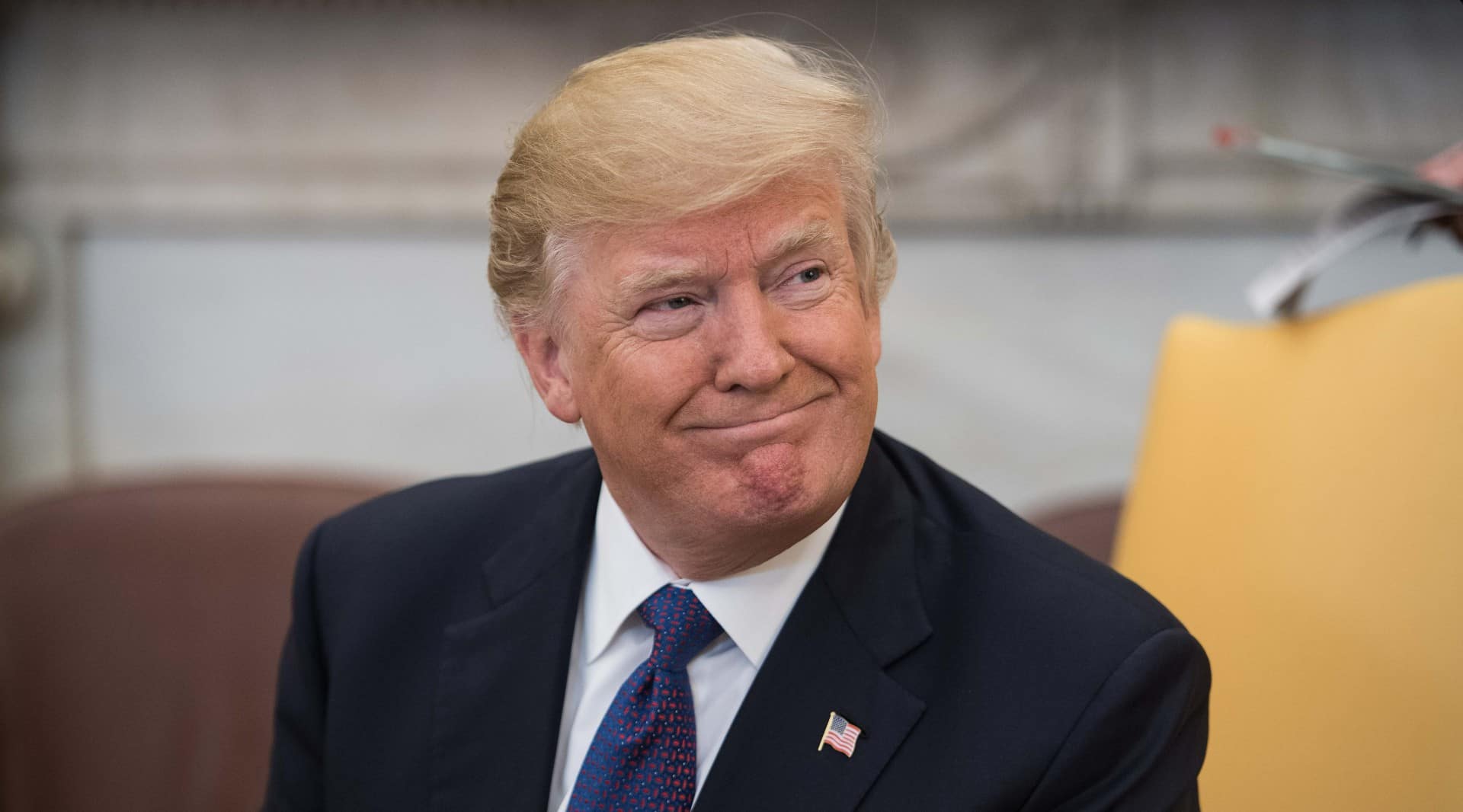They hounded Trump because he refused to give them back after deliberately taking them to Florida.
Liar
Reporting by the New York Times and Washington Post — some from months ago — when pieced together and considered in tandem with past practices related to presidential and other governmental records, reveals this reality. The relevant reporting started no later than February of this year, when the Washington Post
broke the news that the National Archives and Records Administration (NARA) confirmed in a statement, issued by the then-archivist of the United States David S. Ferriero, that in January of 2022 NARA had retrieved from Mar-a-Lago 15 boxes of presidential records, which according to sources included items such as mementos, gifts, and letters. NARA added that Trump representatives were “continuing to search” for additional records.
Months later, in interviewing the then-recently retired Ferriero, the Washington Post detailed the origins of the retrieval of the 15 boxes. At the conclusion of Trump’s presidency, the Post reported, Ferriero “was told by the White House Office of Records Management about a group of boxes in the White House residence that should go to the Archives.”
“As we were moving materials from the White House just before the inauguration, those boxes hadn’t shown up yet,” Ferriero said. The retired archivist then explained how he remembered “watching the Trumps leave the White House and getting off in the helicopter that day, and someone carrying a white banker box, and saying to myself, ‘What the hell’s in that box?’” According to Ferriero, “that began a whole process of trying to determine whether any records had not been turned over to the Archives.”
During the spring of 2021, NARA
reportedly “discovered some high-profile documents missing, such as correspondence with North Korean’s leader Kim Jong Un, that Trump once described as ‘love letters,’” the letter President Barack Obama had left for Trump, and a map of Hurricane Dorian that had been altered with a black marker by Trump. And according to Ferriero’s congressional
testimony, NARA “began talking with Trump’s people right after they left office” about “presidential records.”
[clip]
Leakers Gave Away the Game
The DOJ leaker
reportedly told Newsweek that NARA “believe[ed] that the former White House was stonewalling and continued to possess unauthorized material” and that the National Archive then, earlier this year, “asked the Justice Department to investigate.” The same leaker claimed a grand jury had “concluded that there had been a violation of the law.” Further, according to Newsweek and its “intelligence source,” “the affidavit to obtain the search warrant” “contained abundant and persuasive detail that Trump continued to possess the relevant records in violation of federal law, and that investigators had sufficient information to prove that those records were located at Mar-a-Lago — including the detail that they were contained in a specific safe in a specific room.”
Putting aside for a moment the DOJ’s reliance on “Obstruction of Justice,” this leak reveals the raid of Mar-a-Lago resulted from the criminal investigation into Trump’s compliance with the Presidential Records Act, prompted by NARA under the leadership of then-Archivist Ferriero. And for three reasons, Americans can safely conclude the DOJ’s launching of a criminal investigation — and its use of a grand jury — to target former president Trump was a political witch hunt.
First, NARA handled its discovery of Hillary Clinton’s violation of the equivalent “Federal Records Act” vastly differently. In September of 2015, in response to questions from Sen. Chuck Grassley, R-Iowa, about the former secretary of state’s use of a non-governmental email account, Ferriero informed Grassley of NARA’s normal response to allegations of “unauthorized destruction or removal of federal records.” “NARA will write a letter to the agency asking it to report back to NARA within 30 days and open a case file on the matter.” At that point, NARA and the agency would work together to recover any missing documents or to reconstruct them if needed.
NARA then
explained that upon learning of Clinton’s use of a non-governmental email account in March 2015, it “immediately acted In accordance with our regulations by sending a letter to the State Department, setting off the process described above.” Significantly, while noting that the use of the non-government email may result in a separate DOJ investigation, in the case of Clinton, “NARA has not Initiated an ‘Investigation’ of Secretary Clinton’s email practices; rather, as noted above, we have been communicating with the State Department on this matter, and are deferring to the State Department’s review (and any other agencies conducting Investigations).”
In contrast, in the case of Trump, NARA referred the matter of documents stamped “classified” to the DOJ, which promptly opened an investigation into Trump and used a grand jury to subpoena Trump and others.
Numerous public statements by Ferriero, who at the time of the referral to the DOJ served as the country’s archivist, suggest a partisan goal underlying the referral. First was Ferriero’s bizarre overreaction to “watching the Trumps leaving the White House and getting off in the helicopter” while someone was “carrying a white banker box.” “What the hell’s in that box?,” Ferriero claimed he asked himself.
Then there was Ferriero’s admission that he decided to retire at the end of April 2022 “because he is worried about the political future.” “It’s important to me, that this administration replace me,” Ferriero said, adding, “I’m concerned about what’s going to happen in 2024. I don’t want it left to … the unknowns of the presidential election.”
That’s quite a strange statement for an archivist to make, suggesting as it does that politics matter in the performance of his role.
Third, Ferriero’s comments during a post-retirement interview discussing Jan. 6, suggest he holds an anti-Trump bias. “On his office television, David S. Ferriero, the archivist of the United States, had watched outgoing President Donald Trump whip up the right-wing crowd near the White House,” the Post reported. Ferriero said he recalled watching “this angry mob … really angry, angry people” and thinking to himself, “if these people realize what’s in this building they’re passing, we’re at risk here.” The former archivist called January 6, 2021, “the worst day of his tenure as the keeper of the nation’s collective memory,” and “the worst day of my life” — “the absolute worst.”
It is not merely NARA’s referral to the DOJ and Ferriero’s apparent bias that suggests a political motive, however: It is the reality that even if the documents were classified, Trump has the right to access them and NARA could have worked with the former president to set up a secure location for his presidential papers, which is precisely what Ferriero and the NARA did with Barack Obama.
In 2016, before President Obama left office, he rented a private facility in Hoffman Estates to serve as a storage place for his presidential papers, and by October of 2016, while he was still in office, shipments of artifacts from his presidency began
arriving at the suburban Chicago storage facility. A year later, the Chicago Tribune reported that after the National Archives and Records Administration had worked with the former Democrat president to
ship his documents to the Chicago suburb, where they were stored and kept secured, Obama decided not to retain a paper archive at his presidential museum, “meaning they would be shipped back to Washington once a decision [was] made on where to keep them permanently.”
The Obama documents — both classified and unclassified — remained in Hoffman Estates well into 2018, as evidenced by a
letter of intent executed between Ferriero on behalf of the National Archives Trust Fund and the Obama Foundation. Among other things, the letter of intent memorialized the Obama Foundation’s agreement to “transfer up to three million three hundred thousand dollars ($3,300,000) to the National Archives Trust Fund (NATF) to support the move
of classified and unclassified Obama Presidential records and artifacts from Hoffman Estates to NARA-controlled facilities that conform to the agency’s archival storage standards for such records and artifacts.”
The only difference between the Hoffman Estates’ storage of the Obama presidential records that began in 2016 and the Mar-a-Lago storage of Trump’s presidential records was that the documents were technically within the possession of NARA. But even though the documents were legally the property of NARA, Obama still had the right to access the records, including the classified documents.
So if upon receiving the 15 boxes of documents back from Trump, NARA had legitimate concerns about the security of Mar-a-Lago — a strange worry to hold given that the Secret Service must safeguard the location to protect Trump and his family — a bureaucracy committed to the country and safeguarding her artifacts would have worked to arrange for the documents to be preserved under the auspices of NARA control in a location chosen by Trump, as it had done with Obama.

 conservativebrief.com
conservativebrief.com
but back in the 70s there was a song about troglodytes, and for the longest time I thought they were saying chocolidytes.

conservativebrief.com


conservativebrief.com
